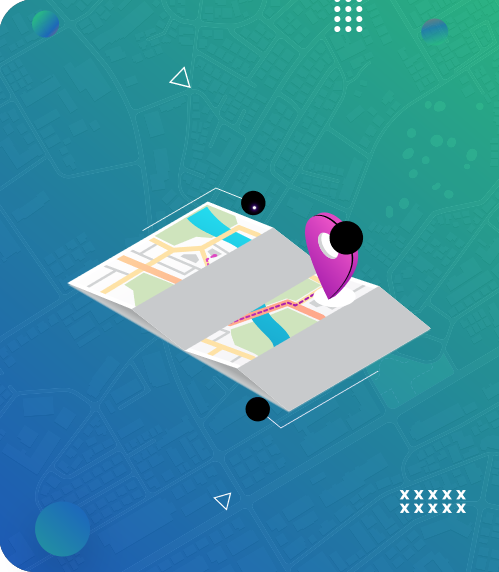Maps are indispensable tools for navigating our world. They provide essential information about terrains, landmarks, and routes. With various map types available today, we must fully understand what it entails and how to use them to their full potential. However, to fully grasp the information on a map, we need map key symbols.
They are essential in a map as they help us discern features and locations that lie therein. In this guide, we will focus on map key symbols and explore their significance and common examples you may encounter. At the end of this guide, you’ll fully understand and become confident in reading maps effectively.

- The Significance of Map Key Symbols
- 3 Common Map Key Symbols Found in Modern-Day Maps
- Understanding the Role of Key for Map Symbols in Maps
- 6 Helpful Tips To Consider When Making a Map Key With Symbols
- Understanding How Map Legends Can Benefit Map Readers
- Mapize Is the Ultimate Mapping Platform for Creating Custom and Interactive Maps
The Significance of Map Key Symbols
While maps are powerful tools capable of communicating vast amounts of information concisely, one cannot deny the importance of map key symbols. Maps will become overwhelming and impractical without them. As a result, we won’t use them in navigation, exploration, and planning trips.
Certainly, you may wonder what map key symbols are all about and why they are important in cartography. Map key symbols are graphic representations of real-world features. They are visual shorthand, providing a condensed depiction of various elements on a map.
Thus, symbols on maps make them universally accessible, readable, and easy to use. There are basic principles that these map symbols must follow to become significant when reading a map. They include the following:
- Universality: Map key symbols must be universally understood, ensuring consistent interpretation across different maps and regions.
- Simplicity: The symbols on a map must be simple and easily recognizable to ensure quick comprehension by users.
- Clarity: Each symbol on a map must represent a specific feature, thereby eliminating confusion.
3 Common Map Key Symbols Found in Modern-Day Maps
As highlighted in the previous section, map key symbols allow us to navigate and interpret maps effectively. It is also beneficial to consider common map key symbols you can identify when reading your next map.
Let’s look at three map key symbols mapmakers use in modern maps.
1. Natural Features: Map Key Symbols of Different Elements of Nature
One of the common map key symbols is those for natural features. They are symbols of water bodies, mountains, and vegetation. Concerning water bodies, symbols representing rivers, lakes, and oceans come in various shapes and sizes. They also have variations denoting special characteristics (a wavy line can represent a river, while a filled circle represents a lake).
Triangles or angular shapes often depict mountain symbols. The shape of the triangle may indicate the mountain’s relative height. Vegetation symbols are usually in green dots, which communicate the type and density of vegetation in a particular area. For instance, a green dot cluster represents a dense forest, while sparse dots indicate grasslands.
2. Cultural Features: Map Key Symbols That Reveal Cultural Diversities
Cultural features symbols are common map key symbols, including settlements, transportation, and landmarks. Settlement symbols are like dots or circles, with larger ones depicting larger population centers and vice versa.
Transportation symbols depict roads, highways, railways, airports, and posts, providing transportation network information regarding a mapped area. They are usually lines, with a solid line indicating a major highway and a dashed line indicating a secondary road. Landmark symbols are distinct icons representing monuments, churches, lighthouses, restaurants, parks, and museums.
3. Topography: Map Key Symbols of Different Terrain
Topography is another example of map key symbols for contour lines and elevation points that help accurately depict the terrain’s shape and elevation. Contour lines connect points of equal elevation, giving users a sense of the terrain’s shape and steepness.
Tight contour lines indicate steep slopes, while widely spaced lines suggest gradual elevation changes. Elevation point symbols are small numbers along the contour lines, representing specific elevations. These numbers allow map readers to determine the height of a location accurately.
These examples represent just a fraction of the wide array of map key symbols used to convey information on maps. It is essential to note that symbols can vary depending on the map’s purpose and scale. Thus, it becomes helpful to consider the key for map symbols to understand them comprehensively.

Understanding the Role of Key for Map Symbols in Maps
The key for map symbols is essential to any map. It serves as a guide that unlocks the meanings behind the various symbols on the map. Thus, it enables readers to uncover and interpret the presented information.
When examining a map, the key for map symbols typically lies in a corner or the margin, separate from the main map area. Depending on the map maker, they present the map key as a section or table correlating each symbol with its corresponding meaning or feature. Thus, symbols in the map key are graphical representations, allowing you to recognize and comprehend them easily visually.
There is a standardized system for interpreting maps when considering common map key symbols. This ensures consistency in reading maps across different regions and nations. For instance, a triangle shape on a map usually represents a mountain peak.
Also, the key for map symbols allows adaptability and flexibility. You can customize or modify them based on your needs or audience requirements. Also, you can integrate specialized map key symbols to cater to a particular audience.
Referencing the map key allows your audience to unlock the meaning behind the symbols for them to navigate easily. Similarly, if you are on a map-reading adventure, consult the key for map symbols to better understand the world around you.

6 Helpful Tips To Consider When Making a Map Key With Symbols
Creating a map key with symbols is a crucial step in cartography, as it provides a clear and concise guide for interpreting symbols on a map. Since map key symbols are essential in maps, there is a need to provide a map key. So, here are some helpful tips to remember when creating a practical map key with symbols.
- Simplify The Map Key Symbols: Keep map key symbols simple and easily recognizable. Avoid overly complex representation that confuses readers.
- Use Clear and Intuitive Symbols: Select symbols that intuitively represent features. For instance, use a tree symbol for forests or a house symbol for settlements. Ensure they are visually distinguishable regardless of the map scale.
- Provide Concise Description: Accompany each symbol with a brief but informative description explaining its meaning. Avoid lengthy descriptions that could overwhelm your audience. Also, keep the description consistent in style and format.
- Consider Map Size and Format: Adapt the map key’s size and layout to fit the map’s overall design. Also, ensure it is legible and accessible even when the map is scaled down.
- Test for Clarity: Conduct user testing on your maps before finalizing the map key. Revise and refine the map key based on your feedback, and make necessary adjustments to improve clarity and usability.
- Regularly Update and Revise: Maps and their associated symbols change over time. Thus, carefully reviewing and updating the map is vital to maintaining accuracy and adequately reflecting any symbol meaning changes. Also, indicate the version of the map key to help readers identify the most current information.

Understanding How Map Legends Can Benefit Map Readers
Map key symbols and map legends are two terms that are interchangeable in the mapping realm. While they both serve the purpose of providing explanations for the symbols used on a map, there are subtle differences between the two. While we have understood map key symbols, let’s have an overview of map legends.
Map Legends are explanatory sections accompanying the map, typically in a corner or the margin. They serve as reference tools for users who seek a deeper understanding of the map’s symbols. Consequently, it allows them to study the symbols and meanings at their own pace.
Map legends also offer flexibility in terms of customization and modification, incorporating specialized symbols or additional explanations based on the map’s unique characteristics. Using map legends can enhance your ability to interpret and navigate maps effectively by helping you unlock the wealth of information they provide.
Mapize Is the Ultimate Mapping Platform for Creating Custom and Interactive Maps
Map key symbols are the keys that unlock the language of maps, allowing us to navigate, explore, and understand our world. They provide a universal visual shorthand that transcends language barriers and fosters efficient communication. By familiarizing ourselves with common map key symbols, we can confidently interpret maps and unravel their hidden information.
Interestingly, Mapize is a cutting-edge mapping tool that revolutionizes how we interact with maps. It offers advanced features for creating interactive maps and visualizations, including the ability to customize map key symbols.With Mapize, users can easily design and personalize map keys to suit their needs, making the map reading experience even more engaging and intuitive. By harnessing the power of Mapize, map creators can create visually stunning maps with clear and informative map key symbols. Therefore, join Mapize today and create your first custom maps for free.






